CATEGORIFICATION OF CLUSTER ALGEBRAS VIA QUIVER HECKE ALGEBRAS
M. Masaki Kashiwara
Masaki Kashiwara is Professor emeritus in Mathematics at the Research Institute for Mathematical Sciences, Kyoto University. He has made leading contributions towards algebraic analysis, microlocal analysis, D-module theory, Hodge theory, sheaf theory and representation theory. Together with Mikio Sato, Masaki Kashiwara established the foundations of the theory of systems of linear partial differential equations with analytic coefficients, introducing a cohomological approach that follows the spirit of Grothendieck theory of schemes
The notion of cluster algebras was introduced by FominZelevinsky. One motivation came from the multiplicative structure of upper global basis (or dual canonical basis). We use quiver Hecke algebras to categorify cluster algebras. Namely, the category of modules over quiver Hecke algebras has a structure of monoidal category. Its Grothendieck group has a cluster algebra structure. Simple modules correspond to the upper global basis, and cluster monomials correspond to simple modules.
Durée :
Kyoto lecture - Series of talks in honour of Masaki Kashiwara
Du au
IRMA, Strasbourg
Université de Strasbourg - USIAS - Institute for Advanced Study
Following Mikio Sato’s pioneering work, Masaki Kashiwara developed, starting from his thesis in the seventies, the theory of D-modules. The point of view is to study a system of linear partial differential equations by using the methods of modern algebraic geometry and homological algebra. This change of paradigm led to a new field of research in mathematics, now called Algebraic Analysis. Among his striking results obtained in collaboration or alone, let us cite the involutivity of the characteristic variety of a D-module, the index theorem, the Riemann-Hilbert correspondence for holonomic D-modules in the regular case and recently, in the irregular case. Kashiwara always kept a special interest for representation theory. One of his celebrated results is the proof, obtained in the early eighties in collaboration with Brylinski, of the Kazhdan-Lusztig conjecture (also proven independently by Beilinson and Berstein). This conjecture proposed a mysterious equality between multiplicities in the representation theory of semi-simple Lie algebras and numerical data encoding singularities of Schubert varieties. In their proof the theory of D-modules provided a geometrical bridge connecting the two sides of the equality. Motivated by the advances in the theory of integrable systems in the eighties, in particular the discovery of quantum groups, Kashiwara introduced crystal bases. These objects can be seen metaphorically as the residue of bases of representation of quantum groups when the temperature tends toward zero. There are now an important tool for the combinatorial description of representations of semi-simple Lie algebras, or more generally of Kac-Moody or even Borcherds algebras. They come together with bases called global crystal bases or canonical bases whose study has led to the current important theory of cluster algebras.
Thème(s) : Mathématiques
Sciences fondamentales
Producteur : Université de Strasbourg
Réalisateur : Université de Strasbourg
Series of talks in honour of Masaki Kashiwara
EXOTIC FOURIER TRANSFORMATIONS OVER FINITE FIELDS
M. Gérard Laumon
Gérard Laumon is a CNRS senior researcher at the University Paris-Sud. He studied at the École Normale Supérieure and Paris-Sud 11 University, Orsay. He was awarded the Silver Medal of the CNRS in 1987, and the E. Dechelle prize of the French Academy of the Sciences in 1992. In 2004 Laumon and Ngô Bảo Châu received the Clay Research Award for the proof of the Langlands and Shelstad’s Fundamental Lemma for unitary groups, a component in the Langlands program in number theory. In 2012 he became a fellow of the American Mathematical Society
Independently, Braverman-Kazdhan (2003) and Lafforgue (2013) introduced a new approach to Langlands’s functoriality involving Fourier transformations associated to Langlands transfert morphisms. The Langlands functoriality has an analog over finite fields, which has been proved in full generality by Lusztig. So the Fourier transformation part of the above approach makes sense in that context. In the talk, I will present some results that we have recently obtained with Emmanuel Letellier.
IRREGULAR HODGE THEORY
M. Claude Sabbah
Claude Sabbah is CNRS senior researcher at the Centre de mathématiques Laurent Schwartz of the École Polytechnique in Palaiseau. He is working in the domain of linear differential equations in the complex domain and their applications to algebraic geometry. Claude Sabbah has been Vice-President of the French Mathematical Society (SMF). He was involved in the creation of the CEDRAM program, and the Journal de l’École Polytechnique, relaunched in 2013, of which he is now the journal manager
Starting from the Riemann - resp. Birkhoff - existence theorem for linear differential equations of one complex variable, I will motivate on the example of hypergeometric - resp. confluent hypergeometric - equations the variant of Hodge theory called ‘irregular Hodge theory’, originally introduced by Deligne in 1984. I will also explain the interest of this theory in relation with mirror symmetry of Fano manifolds.
CATEGORIFICATION OF CLUSTER ALGEBRAS VIA QUIVER HECKE ALGEBRAS
M. Masaki Kashiwara
Masaki Kashiwara is Professor emeritus in Mathematics at the Research Institute for Mathematical Sciences, Kyoto University. He has made leading contributions towards algebraic analysis, microlocal analysis, D-module theory, Hodge theory, sheaf theory and representation theory. Together with Mikio Sato, Masaki Kashiwara established the foundations of the theory of systems of linear partial differential equations with analytic coefficients, introducing a cohomological approach that follows the spirit of Grothendieck theory of schemes
The notion of cluster algebras was introduced by FominZelevinsky. One motivation came from the multiplicative structure of upper global basis (or dual canonical basis). We use quiver Hecke algebras to categorify cluster algebras. Namely, the category of modules over quiver Hecke algebras has a structure of monoidal category. Its Grothendieck group has a cluster algebra structure. Simple modules correspond to the upper global basis, and cluster monomials correspond to simple modules.

